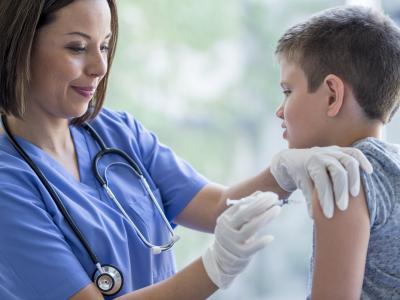Oct 31, 2003 (CIDRAP News) – Cattle that were vaccinated against Escherichia coli O157:H7 in trials the past 2 years showed significant reductions in prevalence of the pathogen, according to a Canadian company that hopes to market the vaccine as a food safety measure.
Bioniche Life Sciences, Belleville, Ont., reported in a news release that cattle inoculated with the new vaccine at the University of Nebraska had an average 59% reduction in prevalence of E coli O157:H7 compared with unvaccinated cattle.
The prevalence of the pathogen was less than 11% in the vaccinated cattle, versus 29% in unvaccinated animals, the company said. "At market weight, 84 days after vaccination, 19 percent of vaccinated cattle were shedding E. coli O157:H7 compared with nearly 41 percent of unvaccinated cattle," the statement said.
Rodney A. Moxley, DVM, PhD, who helped conduct the trials, said the 59% reduction was achieved in a study this year involving more than 600 cattle, and the results of a smaller study in 2002 were "very, very similar." A report of the 2002 study is expected to be published in Vaccine in January, Moxley told CIDRAP News. A report of the 2003 study has not yet been completed, he said. Moxley is a professor in the department of veterinary and biomedical sciences at the University of Nebraska in Lincoln.
This year's study involved 480 cattle divided into four groups of 120, including one control group and groups that received one, two, or three doses of the vaccine, according to Moxley. In addition, the study included an "external control group" of 128 unvaccinated cattle in a separate pen.
The 59% reduction was an average for the vaccinated groups, Moxley said. He declined to list the reductions for the different dosage groups, commenting, "We just analyzed the data not long ago, and we haven't discussed how much we're ready to release." He said no adverse effects of the vaccine were observed.
Dr. Dragan Rogan, Bioniche vice president for research and development, commented in the news release, "These results give us confidence that our goal is within reach—a vaccine that will effectively reduce the threat of this very dangerous pathogen." Bioniche President and CEO Graeme McRae added that the vaccine could help reduce E coli O157:H7 contamination of water supplies as well as food.
Martin Warmelink, president of Bioniche Food Safety, said the trial results show it is appropriate for the company to begin planning for regulatory reviews of the vaccine in the United States and Canada. He said the firm has "good reason to believe" it may be able to market the vaccine sometime in 2004.
Moxley said he couldn't say how much the vaccine will cost producers. "The company indicates it would be comparable to other vaccines that are used" in cattle, he said.
Since cattle don't get sick from E coli O157:H7, "Feedlot owners or producers might question why they would want to vaccinate," Moxley commented. Making vaccination as practical as possible, perhaps by combining the vaccine with other inoculations, could help make the vaccine acceptable to producers, he said. "It's also possible that packers may start requiring effective intervention strategies for O157, and if that were the case, it would reinforce the idea that feedlots or producers would want to use the product."
Craig Hedberg, PhD, a food safety expert at the University of Minnesota in Minneapolis, commented that the vaccine appears to be "another incremental step in control of O157." Based on the company statements, he said, "At market weight it looks like they have a 54% reduction in O157. That's better than 0%, and all the incremental steps we can take will help reduce the risk. But when have you heard of a human vaccine being licensed with a 54% efficacy rate?"
As for preventing environmental contamination, Hedberg said, "Again it's good to reduce the load, but O157 may be able to survive and grow, and thus cutting outputs by half would not translate into a similar reduction in risk." Hedberg is an associate professor of environmental and occupational health at the university's School of Public Health.
Bioniche said the vaccine was originally developed by Dr. Brett Finlay of the University of British Columbia, and the vaccine used in the Nebraska studies matched the protein profile of Finlay's prototype. "An earlier experimental vaccine with a protein profile that did not conform to the UBC prototype was used in a large Alberta feedlot study that began in 2001 but yielded inconclusive data," the company said.
Bioniche said it is developing the vaccine in collaboration with the University of Nebraska, the University of British Columbia, the Alberta Research Council, and the University of Saskatchewan's Vaccine and Infectious Disease Organization.
















